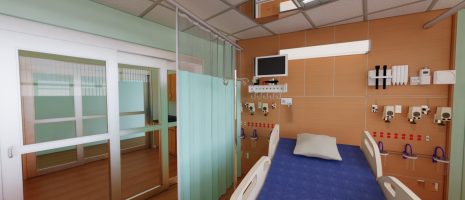Holistic Oversight: Design documentation critical to achieving energy use intensity goal

Third in a series of excerpts from the free executive guide “Concept to Consumption: Outcome-based Oversight of Building Performance.”
By Adam McMillen and Lincoln Pearce
The design component of the performance oversight method concept to consumption develops the project’s concepts into clear and specific design documentation. These documents specify the solutions that will achieve the owner’s energy use intensity (EUI) goal and provide the means to evaluate actual building performance. The completion of design documents is a critical point in a project where designers hand the plans over to the construction team, so it’s important to ensure that the plans and specifications can achieve the owner’s goals.
Several key steps can make this process go smoothly. During the design phase, be sure to:
Clarify the assumptions for evaluating the building. Discussions with the owner should lead to full understanding of the use of the building, which will help determine the key items of focus for achieving the desired EUI. What are the building’s primary functions and programming? What is its schedule? For example, being operational seven days a week versus five days a week will affect the EUI and can make a difference in which measures are prioritized to attain the desired outcome.
Document the design intent. Everything that affects the building’s energy performance must be clearly defined and documented for clear understanding. This includes equipment specifications, design intent, how operations will be monitored, and how the gathered data will be used.
Establish an energy budget. Just as all physical components of a project (architectural, mechanical, electrical, etc.) are given a portion of the overall construction budget, the building’s key systems should be given a portion of the end-use “energy budget.” This is a key step in the concept-to-consumption process that is typically missing in most projects. For example, lighting, heating, etc., each can be allotted a specific amount of energy. If during operations the total EUI is higher than the goal, submeter monitoring will show which systems are meeting their individual energy budget and which are not – giving the team a clearer, easier way of identifying the problem system and a quicker path to correcting it.
Determine systems to be monitored. While it’s overwhelming and too expensive to monitor every system, the team should identify and monitor the five to seven key items with the largest effect on overall building performance. This goes beyond simply monitoring utility consumption (gas, electricity, steam, chilled water) and includes submeters that break out power consumed by individual systems such as lighting, HVAC, plug loads, etc. – any end uses with an established “energy budget.” Plans for gathering and using the performance data also are established and documented during this step.
These four actions ensure the discussion and documentation are in place so that everyone – owner, design team, contractor, commissioning agent – understands how the building is intended to be used, how it is expected to perform and under what set of conditions, and how the performance will be monitored.
Next: Holistic oversight part 4: Ensure your building’s intended performance through commissioning
Previously posted blogs in this series:
Holistic oversight part 2: Set your building’s EUI and make it the benchmark for project success
Download the entire executive guide, “Concept to Consumption: Outcome-based Oversight of Building Performance.













